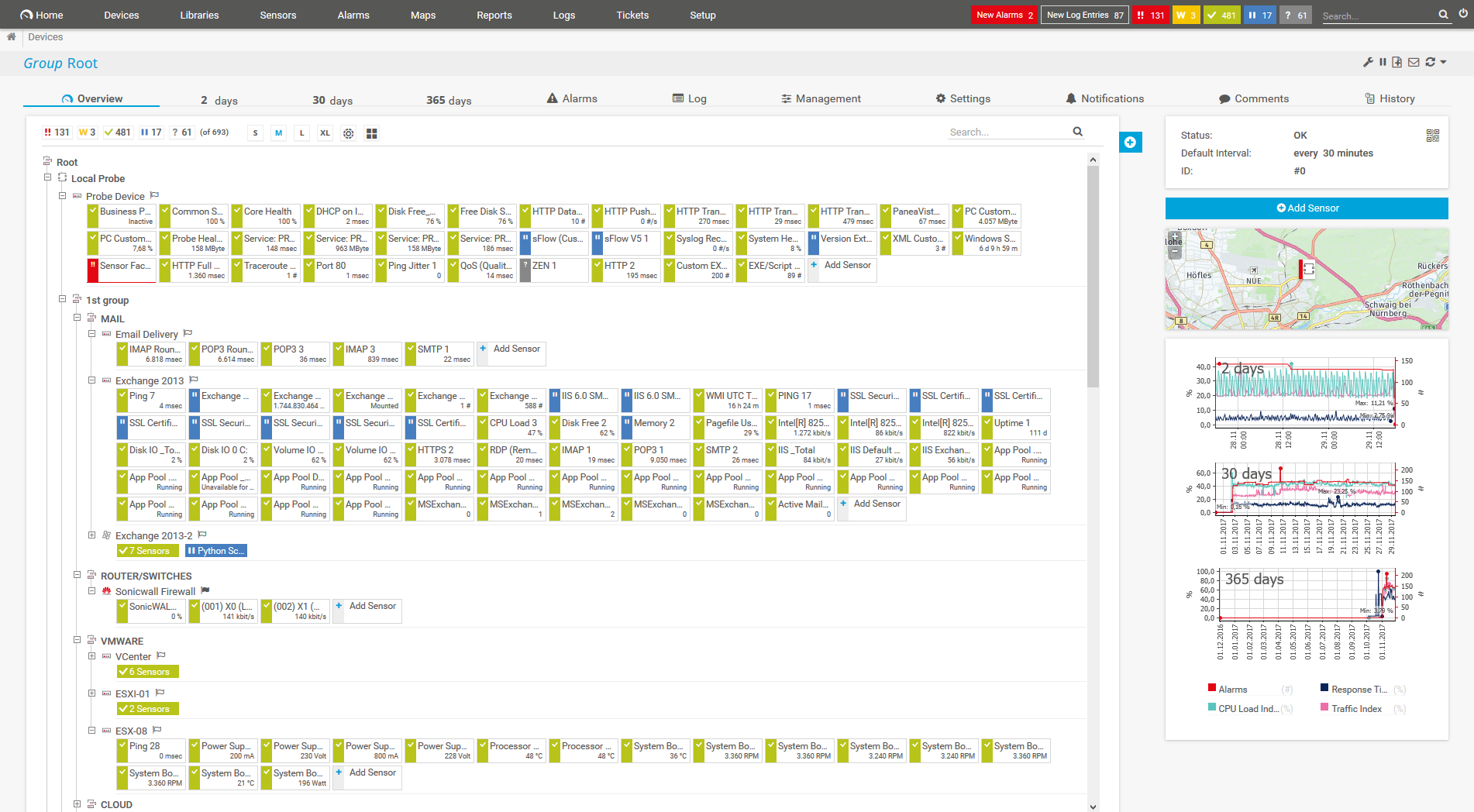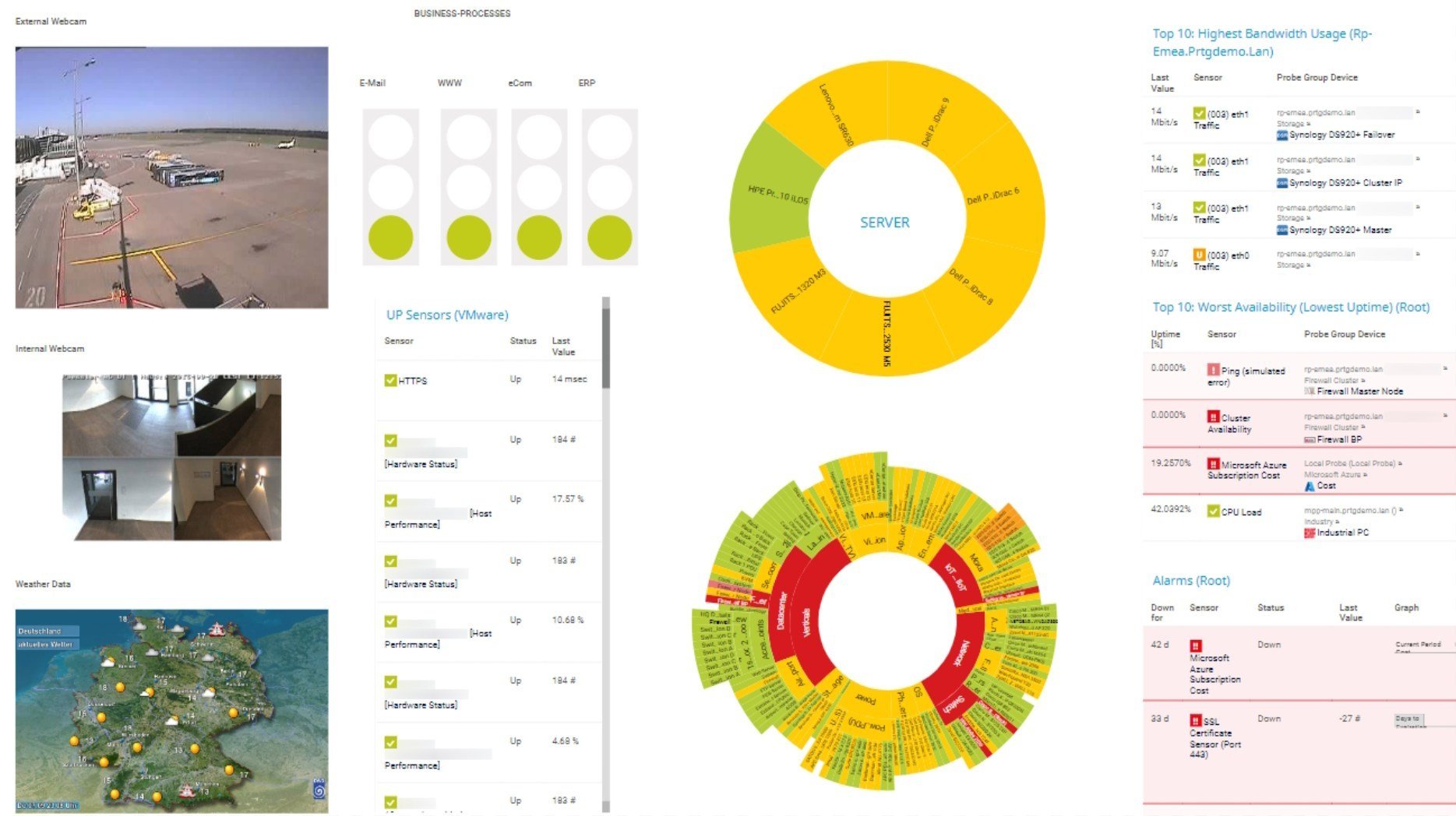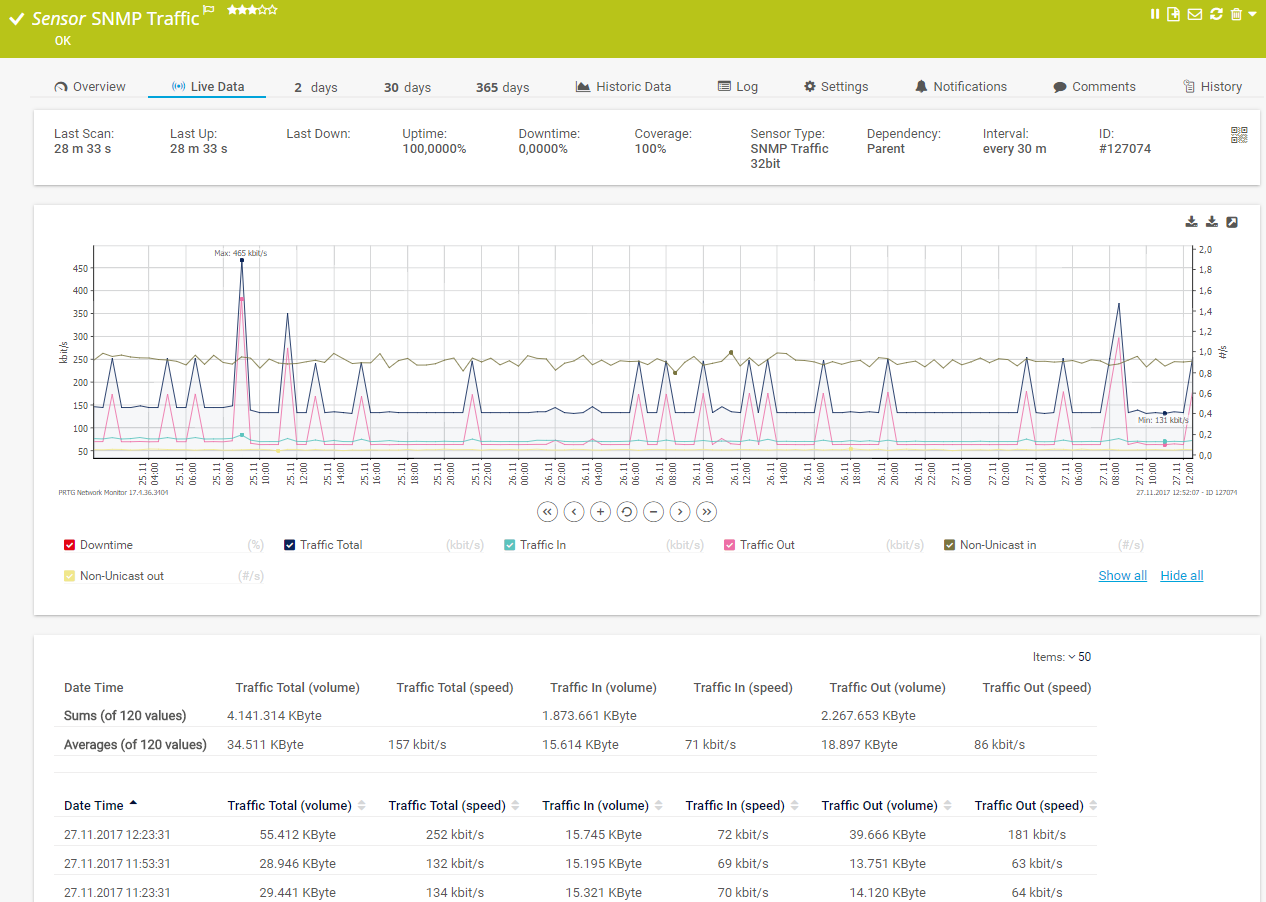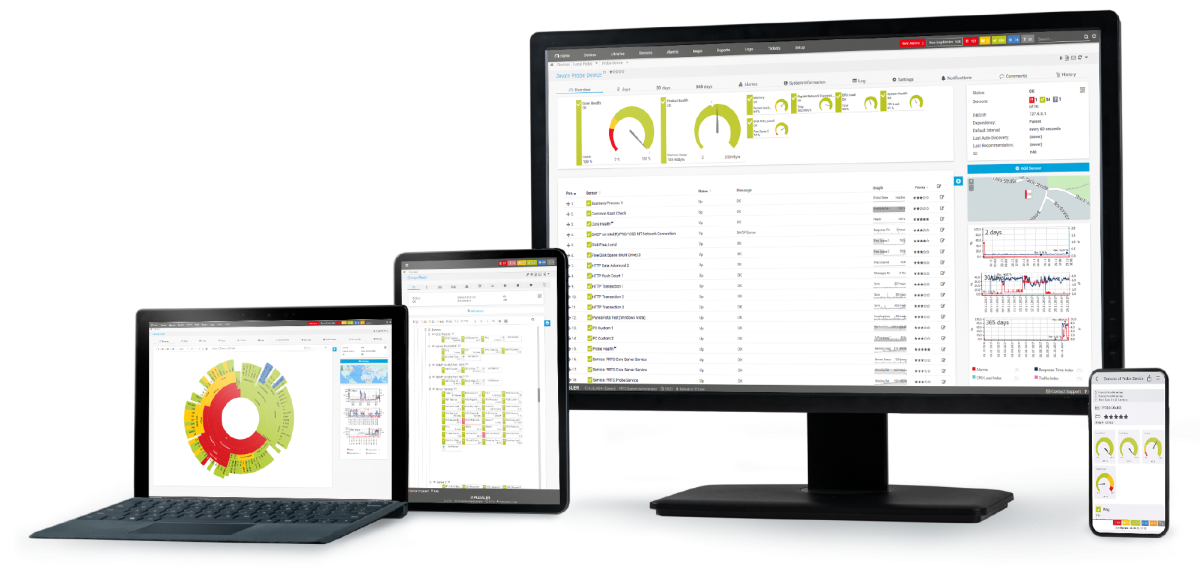Custom alerts and data visualization let you quickly identify and prevent low performance and downtimes of your directory servers and services.
LDAP (Lightweight Directory Access Protocol) is typically used to authenticate user accounts and users, for example the employees of a company. With LDAP monitoring, however, the focus isn’t so much on the LDAP protocol but on the status of LDAP servers. With Paessler PRTG, you can keep an eye on all key parameters of your directory servers.
When response times are too high and uptime too low, access to data becomes painstakingly slow – or even nonexistent. This not only causes headaches for users, but also reduces the productivity of your business. Avoid downtime and network crashes by using LDAP monitoring with PRTG.
Set up PRTG to monitor CPU usage, memory, and disk usage on the LDAP server to ensure it has enough resources to handle requests efficiently. Make sure that your hardware performs at its best by quickly detecting and resolving critical performance issues to enhance user experience.
Always have an eye on your log files for better access control over your LDAP directory, including failed login attempts. PRTG comes with a wealth of historical data that you can analyze in detail to identify unauthorized access attempts or unusual patterns of activity.
Diagnose network issues by continuously tracking the availability, health, and performance of your LDAP server. Show detailed information about response times, CPU load, bandwidth usage, network traffic, and other key metrics in real time. Visualize monitoring data in clear graphs and dashboards to identify problems more easily. Gain the overview you need to troubleshoot slow authentication workflows, faulty LDAP configs, server downtimes, and other issues.

Device tree view of the complete monitoring setup

Custom PRTG dashboard for keeping an eye on the entire IT infrastructure

Live traffic data graph in PRTG
PRTG comes equipped with an LDAP sensor that connects to the LDAP server (or directory) and measures the response time. This connection is called a “bind” operation, which means a login to the LDAP server using the “bind” command.
If the server stops responding (or the response time exceeds a predefined threshold), PRTG immediately sends you an alert. This allows you to quickly fix the problem before your network crashes by allocating resources more efficiently, for example with advanced load balancing.
PRTG comes with more than 250 native sensor types for monitoring your entire on-premises, cloud, and hybrid cloud environment out of the box. Check out some examples below!
See the PRTG Manual for a list of all available sensor types.
Real-time notifications mean faster troubleshooting so that you can act before more serious issues occur.
PRTG is a network monitoring tool that works great in distributed networks for the precise monitoring of mail servers, web servers, database servers, virtual servers, and LDAP servers.
PRTG monitors your network traffic, applications, bandwidth, cloud services, databases, virtual environments, availability & uptime, ports, IP addresses, hardware status, network security, web services, and much more.
Monitor your network with PRTG via SNMP, flow (NetFlow, jFlow, sFlow, IPFIX), SSH, WMI, SQL, or ping. PRTG also supports technologies used in industrial IT, such as OPC UA, MQTT, or Modbus. Use the powerful PRTG API for custom integrations (for example via Python, PowerShell, or REST).
Download and install PRTG on a Windows system (or Linux with the new multi-platform probe), or use our cloud-based product for any operating system. Our native PRTG desktop application runs on Windows or macOS for even quicker access and multi-server views.
PRTG is set up in a matter of minutes and can be used on a wide variety of mobile devices.

“Excellent tool for detailed monitoring. Alarms and notifications work greatly. Equipment addition is straight forward and server initial setup is very easy. ...feel safe to purchase it if you intend to monitor a large networking landscape.”
Partnering with innovative IT vendors, Paessler unleashes synergies to create
new and additional benefits for joined customers.
Combining PRTG’s broad monitoring feature set with IP Fabric’s automated network assurance creates a new level of network visibility and reliability.
By integrating PRTG with Martello iQ, you can add a fast analytics layer to improve uptime, visualize your IT environment, and integrate all of your IT systems into a single pane of glass.
UVexplorer integrates tightly with PRTG to bring fast and accurate network discovery, detailed device inventory, and automatic network mapping to the PRTG platform.
Real-time notifications mean faster troubleshooting so that you can act before more serious issues occur.
Network Monitoring Software – Version 25.3.110.1313 (August 27, 2025)
Download for Windows and cloud-based version PRTG Hosted Monitor available
English, German, Spanish, French, Portuguese, Dutch, Russian, Japanese, and Simplified Chinese
Network devices, bandwidth, servers, applications, virtual environments, remote systems, IoT, and more
Choose the PRTG Network Monitor subscription that's best for you
LDAP (Lightweight Directory Access Protocol) is a simple network protocol for accessing directories. It is the only protocol that allows for communication between an LDAP client and a directory server. By monitoring your LDAP server, you’ll be able to make sure this communication is always running smoothly.
A “directory server” is an LDAP server or a computer that provides a directory service such as Microsoft Active Directory. The LDAP protocol refers to a data structure that is created in accordance with the specifications of LDAP. The current LDAP version is LDAPv3.
In practice, the communication between the client and server goes like this: An LDAP protocol is used to query (and store) information inside an LDAP directory. This information usually includes data on users, PCs, and the certificates of a computer. Two default ports are used here:
LDAP is an industry-standard authentication and authorization protocol. As a result, every corporate network is likely to have at least one LDAP server whose information should be monitored. Pretty much every endpoint that deals with user data in some form or another supports the LDAP protocol:
PRTG comes with a predefined LDAP sensor for monitoring LDAP servers. This sensor is certified as compatible with Microsoft products based on LDAP. It also works with LDAP integrations from other providers in a non-certified capacity.
Setting up the LDAP Sensor is quick and easy. When adding the sensor for the first time, you can select or define your LDAP monitoring settings.
Note: If you opt for a secure (SSL/TLS) connection, then the sensor will require a DNS name in the settings of the parent device for the configuration. The sensor only supports the IPv4 protocol and has a moderate impact on performance.
In PRTG, “sensors” are the basic monitoring elements. One sensor usually monitors one measured value in your network, for example the traffic of a switch port, the CPU load of a server, or the free space on a disk drive. On average, you need about 5-10 sensors per device or one sensor per switch port.
Paessler conducted trials in over 600 IT departments worldwide to tune its network monitoring software closer to the needs of sysadmins. The result of the survey: over 95% of the participants would recommend PRTG – or already have.
Paessler PRTG is used by companies of all sizes. Sysadmins love PRTG because it makes their job a whole lot easier.
Bandwidth, servers, virtual environments, websites, VoIP services – PRTG keeps an eye on your entire network.
Everyone has different monitoring needs. That’s why we let you try PRTG for free.